Yes, this is the painful one. You will learn more about your spirit and determination by the amount of time you can hold this stance, than just about anything else you will do in the dojo!
It's another stance rarely found in Shōtōkan Karate. This is the classic Sumo stance, and if you watch the way that Sumo wrestlers fight, you will get some idea about the function of this stance. It is used for pulling opponents down or off balance. It is also used as the preparatory position for lifting. It is also ideal for getting beneath an opponent's guard to deliver strikes, whilst minimising body exposure.
In combination with its wide and angled foot position, this stance is very stable and strong.
The width of the legs reduces hip rotation, making this a relatively an inefficient stance from which to launch punches and strikes, whilst the stance's lowness requires a substantial shift of weight to deliver kicks.
Technique:
| # | Description |
|---|---|
| 1. | To reach Shiko-dachi, position your feet side-by-side two shoulder-width apart, and turn your toes outwards so that the OUTSIDE of each foot is at 45 degrees. |
| 2. | Your weight should be evenly distributed between your legs. |
| 3. | Now lower your weight so that your knees are bent almost to a right-angle. It's important not to go so low that you are forced to compromise your position by leaning forwards. However, over time your spinal suppleness will improve and your muscles will adapt so that you can get lower without bending or hurting as much. |
| 4. | Your buttocks must be contracted and the pelvis projected in front and upwards. |
| 5. | Remember, the higher your grade, the lower your stance! |
Common mistakes to avoid:
• Don't stick your butt out.
• Don't lean forwards.
• Don't allow either of your knees to collapse in.
• Don't turn your toes out too far.
• Don't stand too wide or narrow.
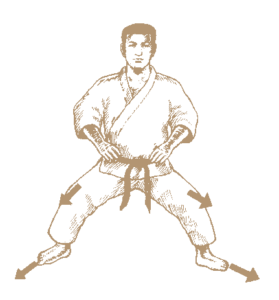
Knees directed in the same direction as the toes of the feet in the perpendicular position of shiko-dachi.
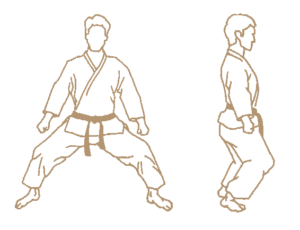
View of the shiko-dachi attitude.
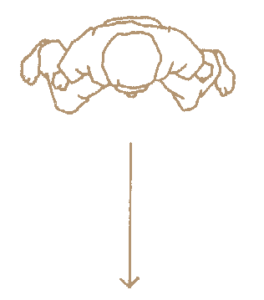
View of the shiko-dachi attitude.
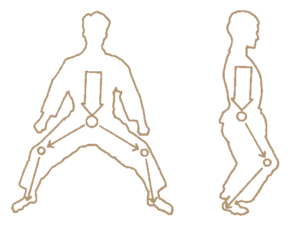
Distribution of gravity in shiko-dachi posture.
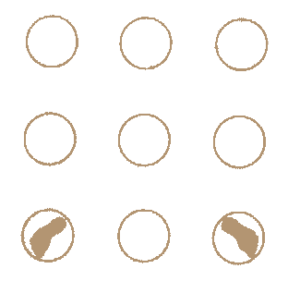
Putting feet in shiko-dachi in the exercise on stumps.





